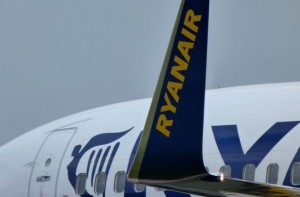Safeguarding against Price Wars

In many industries, price wars have invariably happened. All of you will remember the airlines price war that started in 1992 and bled many airlines around the world. Mobile service providers in India have had price wars at various times.
So are price wars good or bad? How do you safeguard against a price war started by a competitor?
Price wars start for various reasons:
* Excess capacity: Whenever an industry has excess capacity – that is, the demand does not match the installed capacity, you can be sure of a price war.
* Undifferentiated products: If most brands in the marketplace have comparable looks and features, they really become undifferentiated commodities and a price war is bound to happen.
* High prices: If the profit margin in a particular industry is unusually high, some companies would find it to their advantage to start a price war to gain market shares.
* Desperation: If a company is losing shares to competition over a period of time, you can be sure that it would resort to lowering prices to regain lost ground.
Quite frankly, many companies are not geared to counter price wars for various reasons – inefficiencies in their operations or a high cost structure being two of them. That is why lean and mean airlines like SouthWest Airlines, JetBlue and RyanAir (or Indigo in India) just took the more established players to the cleaners
<span ‘times=”” new=”” roman’,=”” serif;=”” font-size:=”” 12pt;”=””>There is one surefire way of guarding against price wars – have a high quality, differentiated product. Apple as a company is so successful today because they have such a differentiated set of products. You may have seen a video of Steve Ballmer of Microsoft mocking Apple before the launch of their $500 iPhone. Well, I am sure he is not laughing any more. Brands like Miele, Harley Davidson, Bang & Olufsen, Innocent, Cirque du Soleil and Grey Goose, to name a few, have done so well only because they have differentiated, high quality products.
However, it is equally possible to shake the market at the lower end by creating low priced but differentiated products. The airlines example is extremely illuminating – the three airlines mentioned above changed the entire business model by concentrating on efficient transportation but shunning all costs that they figured were superfluous. They also looked at a totally different target group for their business – entrepreneurs and vacationers rather than executives. So if you are looking at shaking an industry on price, do keep the following in mind:
* Be the most efficient. Don’t add unnecessary costs to the business.
* Question all industry standards. You will recall another example that I had given of a low cost wine – Yellow Tail – that has stormed the American market.
* Raise standards of quality and customer service simultaneously with the price cut or low price. That is a cost worth incurring.
Companies that fight a price war on parity products with an inefficient cost structure WILL suffer. The guys who will laugh all the way to the bank are the ones who are competing on high quality and differentiation or on superb efficiency.
